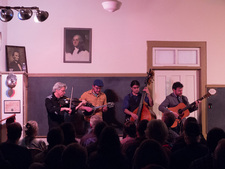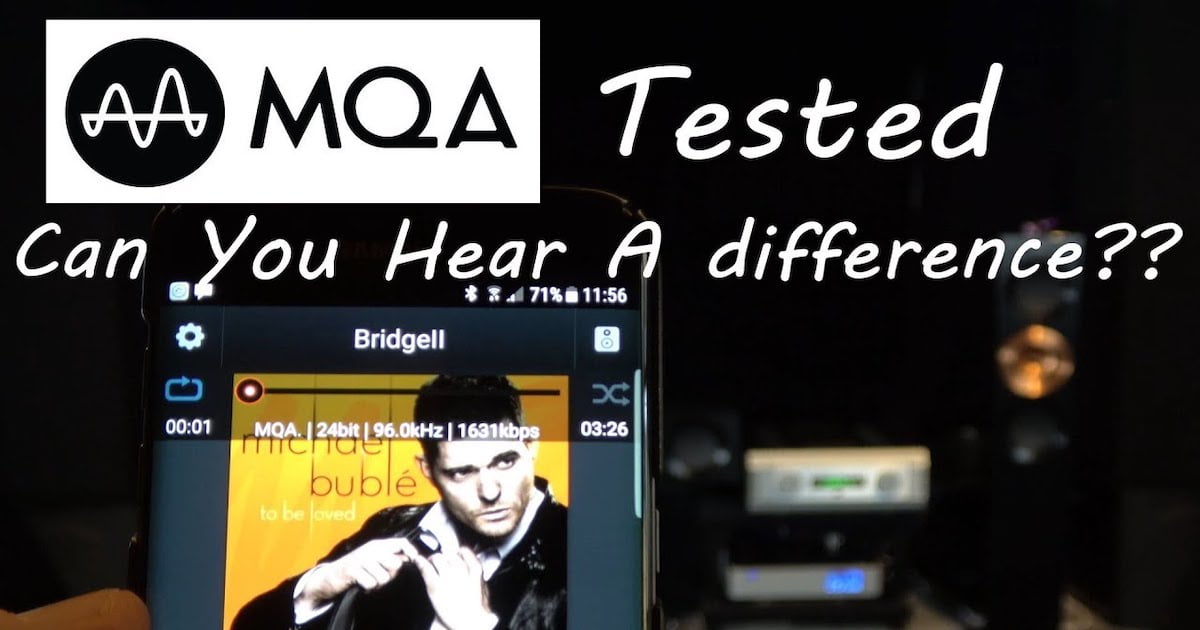It’s the time of year for saving money!
I don’t know about your life, but for me events tend to come in bunches — just like bananas and buses. This week I attended three musical events in three days — each was a unique and rewarding experience, but I’m glad to have a day off.
 On Thursday I attended an open house at Denver’s Apex Audio, who are dealers for Accuphase, AirTight, Audeze, Focal, Electrocompaniet, Rega, Dali, Nordost, Solution, Tannoy, Clearaudio, Grado and Tara Labs. Their offices and showrooms are in an immaculately restored 1893 townhouse. In addition to the excellent selection of high-fidelity equipment, owner Carl Jerritts has populated the showrooms with art and musical instruments from his own personal collections. Jerritts is a bass player and has a special affinity for Alembic. He even has a page on Apex’s website dedicated to this iconic and unique instrument manufacturer. On the hi-fi side of things I had a chance to hear two different systems — one with Focal Stella Utopia Em ($97,500) and another with the Focal Scala Utopia V2 ($34,000) and a wonderful little all-in-one player, the Naim MU-SO ($1,495).
On Thursday I attended an open house at Denver’s Apex Audio, who are dealers for Accuphase, AirTight, Audeze, Focal, Electrocompaniet, Rega, Dali, Nordost, Solution, Tannoy, Clearaudio, Grado and Tara Labs. Their offices and showrooms are in an immaculately restored 1893 townhouse. In addition to the excellent selection of high-fidelity equipment, owner Carl Jerritts has populated the showrooms with art and musical instruments from his own personal collections. Jerritts is a bass player and has a special affinity for Alembic. He even has a page on Apex’s website dedicated to this iconic and unique instrument manufacturer. On the hi-fi side of things I had a chance to hear two different systems — one with Focal Stella Utopia Em ($97,500) and another with the Focal Scala Utopia V2 ($34,000) and a wonderful little all-in-one player, the Naim MU-SO ($1,495).
On Friday I attended and recorded a concert by the new acoustic band Mr. Sun, led by the virtuosic violinist Darol Anger, whose career spans from the mid-1970s. Many audiophiles will remember him from the series of albums he made for Windham Hill. Other members of the band include Joe K. Walsh on mandolin, Grant Gordy on guitar and Ethan Jodziewics on acoustic bass. On their website Darol Anger calls Mr. Sun “a 21st century stringband,” which is as accurate a description as I’ve seen for their eclectic mix of roots sensibilities with jazzers’ ability to improvise.
I’ve recorded at the Salina Schoolhouse over a half dozen times with good to great results. I had contacted Darol before the gig to get his permission to record the show. I used one stereo pair of Groove Tube/Alesis GT-40 microphones (with their cardioid capsules) fed directly to the mic preamp in my Korg MR-1000. I recorded in DSD 128X. Some groups have used sound reinforcement at the schoolhouse, but most, including Mr. Sun, do not.
Due to the fact that the “stage” is really just a 6-inch-high platform on the left hand front of the room, I can’t place microphone stand dead center in front of the band because the front row of chairs is so close that there is no room for it. Instead I have to place the mic stand somewhat off-center, which could be detrimental to the overall instrumental balance. Fortunately often the guitar ends up “stage left” because that way the guitar is facing toward the other players (if the guitarist is right-handed). Since the guitar is always the quietest instrument in an acoustic band, having the mics closer to it than the other instruments usually works in my favor. The results in Mr. Sun’s case were somewhat different than usual, however, because Grant Gordy has a very strong right hand — he’s one of the loudest acoustic guitarists I’ve heard, or recorded. Although no guitar is loud enough to overpower a fiddle or a mandolin, Gordy’s guitar was loud enough so all his subtle accompanying chords and melody lines came through with a clarity and decisiveness that I rarely hear from a recorded acoustic guitar. At the end of the night I went home happy — with a fine live recording of a superb musical group. I didn’t even mind the fact that instead of a 10-minute drive home (as it was at my old house) the trip now takes 45 minutes to get from my place in Denver to the Salina Schoolhouse.
 On Saturday I once more made the drive from Denver to Boulder to attend an open house at PS Audio for the Colorado Audio Society. Paul McGowan put together a presentation that included legendary speaker designer Arnie Nudell and Bascom King, the designer of PS Audio’s new BHK 250 amplifier. (That’s King at left in the photo and Nudell at right.) After an introduction that included some live viola, Nudell talked about his experience with the BHK 250, which achieved the near impossible by displacing Nudell’s longtime reference tube amplifier in his own system.
On Saturday I once more made the drive from Denver to Boulder to attend an open house at PS Audio for the Colorado Audio Society. Paul McGowan put together a presentation that included legendary speaker designer Arnie Nudell and Bascom King, the designer of PS Audio’s new BHK 250 amplifier. (That’s King at left in the photo and Nudell at right.) After an introduction that included some live viola, Nudell talked about his experience with the BHK 250, which achieved the near impossible by displacing Nudell’s longtime reference tube amplifier in his own system.
King talked about how his new design evolved from his work on the Constellation amplifiers. But instead of an all solid-state design, he chose to use a tube front end. Other innovations include a front panel on/off switch that turns off the tubes but keeps the solid-state portion of the amplifier in idle mode. While nothing about the BHK250 is unique to that amplifier, the combination of technologies, parts and construction methodologies is unique. For $7,500, the BHK250 offers the kind of performance and build quality that will surprise you. And while I’ll leave it to folks doing comprehensive reviews for the comparisons to other power amplifiers, I suspect that the BHK250 will be as revolutionary as PS Audio’s DSD DAC.
Today is Sunday, which for most folks is the day they don’t have to do much of anything, But for me it’s time for an afternoon practice session with my band, StoneFish, in preparation for an upcoming gig. But I can’t say I mind too much since another day of making or listening to music, or learning about new audio gear, is always a good day.





